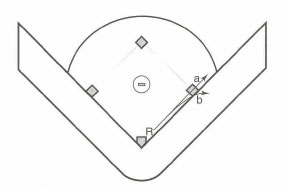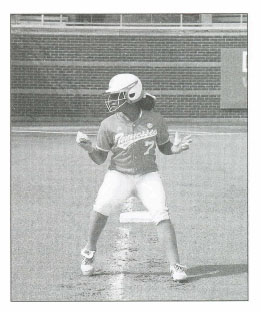|
Strategies For Running From Home To First Base Originally Published in High-Scoring Softball - Ralph and Karen Weekly - Human Kinetics
 The player must run hard through first base. Immediately after crossing the base, the player should come to a stop as soon as possible. This will enable the player to change direction and be ready to advance to second on an overthrow. Again, the shortest distance between two points is a straight line; stopping early after crossing first base will cut down the distance to second base.  Figure 3.3 Position for breaking down.
Let's assume that the player is safe at first and the ball was caught cleanly by the first-base player. After the runner breaks down and stops, she should return to first base on the foul line. She should turn her head toward the field of play when returning to the base. As long as she is returning directly to first base, she is not a "live" player for the defense to attempt to tag. If she makes an attempt toward second, however, she becomes a live player, and the defense can tag her out when she is off the base.
|







